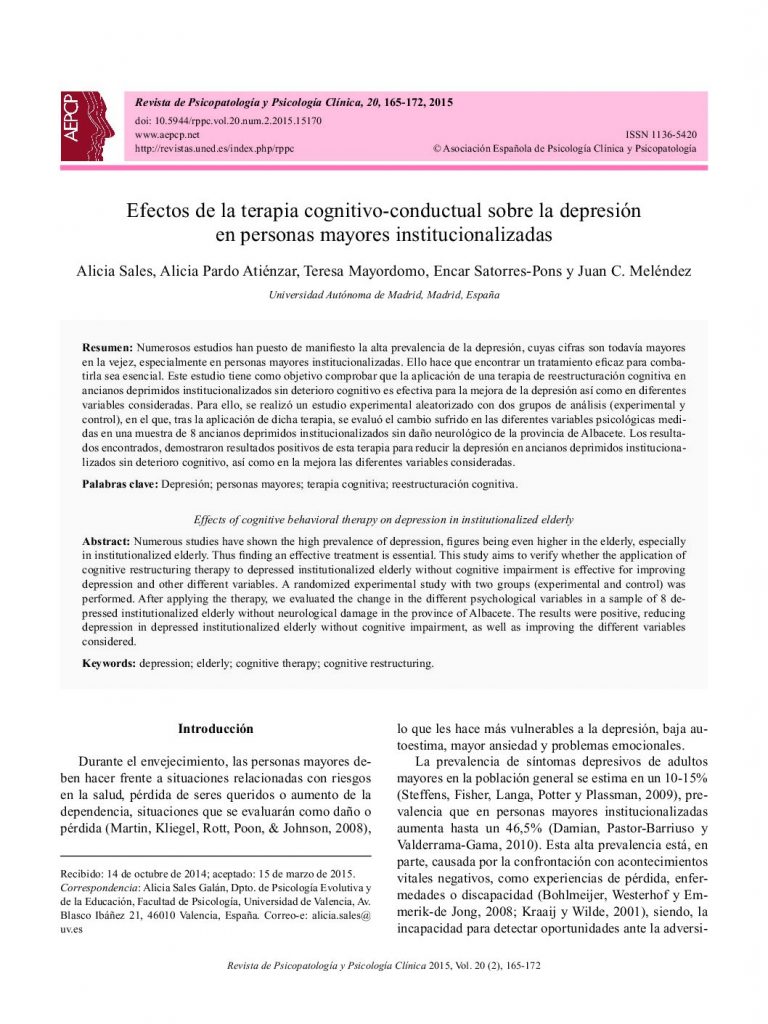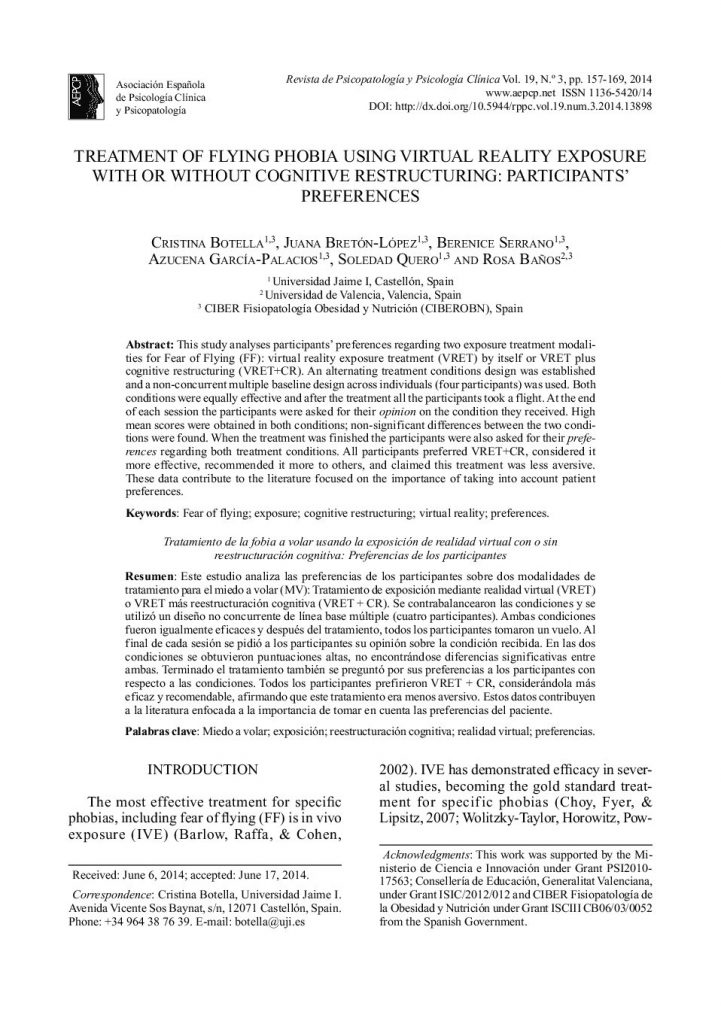Efectos de la terapia cognitivo-conductual sobre la depresión en personas mayores institucionalizadas.

- Evaluación de factores cognitivos positivos y negativos relacionados con el trastorno de pánico: Validación del CATP.
- Predictores de recuperación subjetiva en la esquizofrenia.
- Variables de interés clínico en el tratamiento cognitivo-conductual de la adicción a la cocaína: la especificidad de los trastornos de la personalidad.
- Inventario de supresión del pensamiento del “oso blanco” (WBSI): Propiedades psicométricas de la versión portuguesa (Portugal).
- Cuestionario de Observación de la Conducta Bulímica (COBU): Desarrollo de un instrumento para cuidadores de pacientes con bulimia nerviosa.
- Eficacia del tratamiento con neurofeedback para los trastornos del espectro autista: Una revisión sistemática.
- Efectos de la terapia cognitivo-conductual sobre la depresión en personas mayores institucionalizadas.
- Congresos y reuniones científicas 2015.
Numerous studies have shown the high prevalence of depression, figures being even higher in the elderly, especially in institutionalized elderly. Thus finding an effective treatment is essential. This study aims to verify whether the application of cognitive restructuring therapy to depressed institutionalized elderly without cognitive impairment is effective for improving depression and other different variables. A randomized experimental study with two groups (experimental and control) was performed. After applying the therapy, we evaluated the change in the different psychological variables in a sample of 8 depressed institutionalized elderly without neurological damage in the province of Albacete. The results were positive, reducing depression in depressed institutionalized elderly without cognitive impairment, as well as improving the different variables considered.
Numerosos estudios han puesto de manifiesto la alta prevalencia de la depresión, cuyas cifras son todavía mayores en la vejez, especialmente en personas mayores institucionalizadas. Ello hace que encontrar un tratamiento eficaz para combatirla sea esencial. Este estudio tiene como objetivo comprobar que la aplicación de una terapia de reestructuración cognitiva en ancianos deprimidos institucionalizados sin deterioro cognitivo es efectiva para la mejora de la depresión así como en diferentes variables consideradas. Para ello, se realizó un estudio experimental aleatorizado con dos grupos de análisis (experimental y control), en el que, tras la aplicación de dicha terapia, se evaluó el cambio sufrido en las diferentes variables psicológicas medidas en una muestra de 8 ancianos deprimidos institucionalizados sin daño neurológico de la provincia de Albacete. Los resultados encontrados, demostraron resultados positivos de esta terapia para reducir la depresión en ancianos deprimidos institucionalizados sin deterioro cognitivo, así como en la mejora las diferentes variables consideradas.




